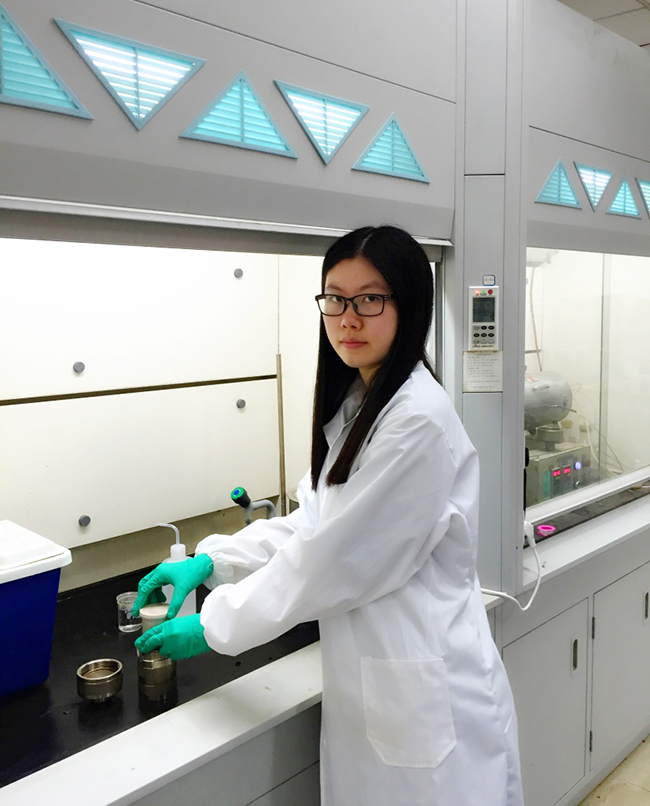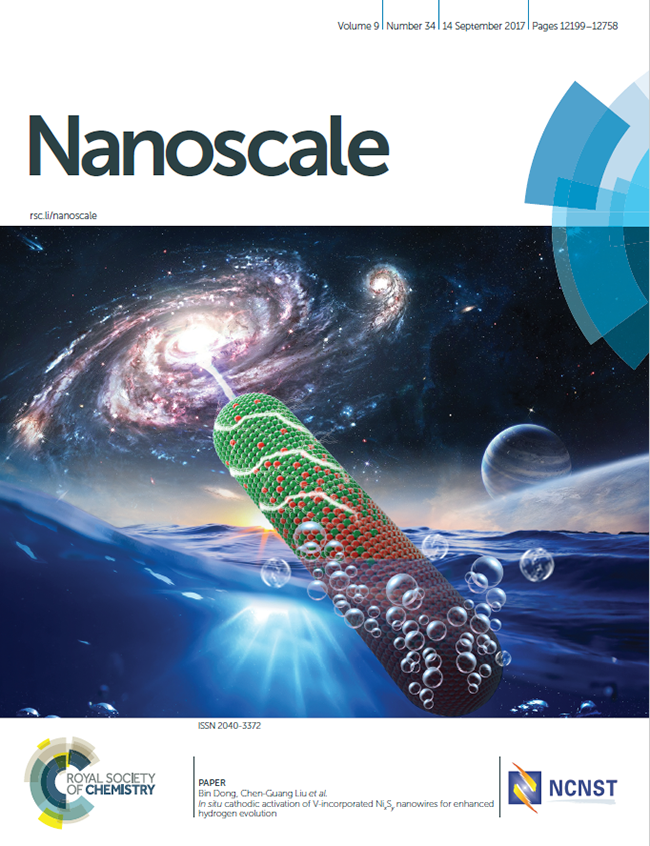Recently, Shang Xiao, the doctoral candidate from State Key Laboratory of Heavy Oil Processing, College of Chemical Engineering, pulished the cover paper In-situ cathodic activation of V-incorporated NixSy nanowires for enhanced hydrogen evolution on Nanoscale. The corresponding authors were Dong Bin and Liu Chenguang.


Electrochemical water splitting has been considered as a sustainable method to obtain clean and renewable hydrogen fuel in recent years. Full water splitting in alkaline media is highly attractive nowadays, which is advantageous to minimize overpotentials, simplifying the system and lowering cost. At present, the most active catalysts for the hydrogen evolution reaction (HER) and oxygen evolution reaction (OER) in alkaline media are precious metals such as Pt- and Ir/Ru-based materials, respectively, which are impossible for widespread utilization. The enhanced activities of electrocatalysts for water splitting can be achieved by designing various nanostructures, utilizing conductive substrates and metal/non-metal doping.In situ cathodic activation (ISCA) of V-incorporated NixSy nanowires supported on nickel foam (VS/NixSy/ NF) can be realized in an alkaline hydrogen evolution reaction (HER) process, which provides not only clearly enhanced activity but also ultrahigh stability for HER. The ISCA process is continuous linear sweep voltammetry (LSV) on VS/NixSy/NF as a cathodic electrode with gradually enhanced HER activity. The activated VS/NixSy/NF (A-VS/NixSy/NF) demonstrates enhanced HER activity with an overpotential of 125 mV to drive 10 mA cm−2 , which is much lower than that of other samples. It may be predicted that the ISCAderived amorphous VOOH film covering on A-VS/NixSy/NF accelerates the HER process, and NiOOH may protect active sites from decaying, leading to excellent activity and structural stability. However, for single metal sulfides, the ISCA process of nickel or vanadium sulfides is not available, implying that the synergistic effect between Ni and V of VS/NixSy/NF may be the key to drive ISCA in alkaline HER. In addition, its ultra-high stability confirms that the stable active sites and nanostructures of A-VS/NixSy/NF are derived from ISCA. Therefore, the ISCA of V-incorporated transition metal sulfides in the alkaline HER process may be a facile and promising method to obtain efficient electrocatalysts.
See more information about the paper:
http://pubs.rsc.org/en/content/articlepdf/2017/NR/C7NR02867A